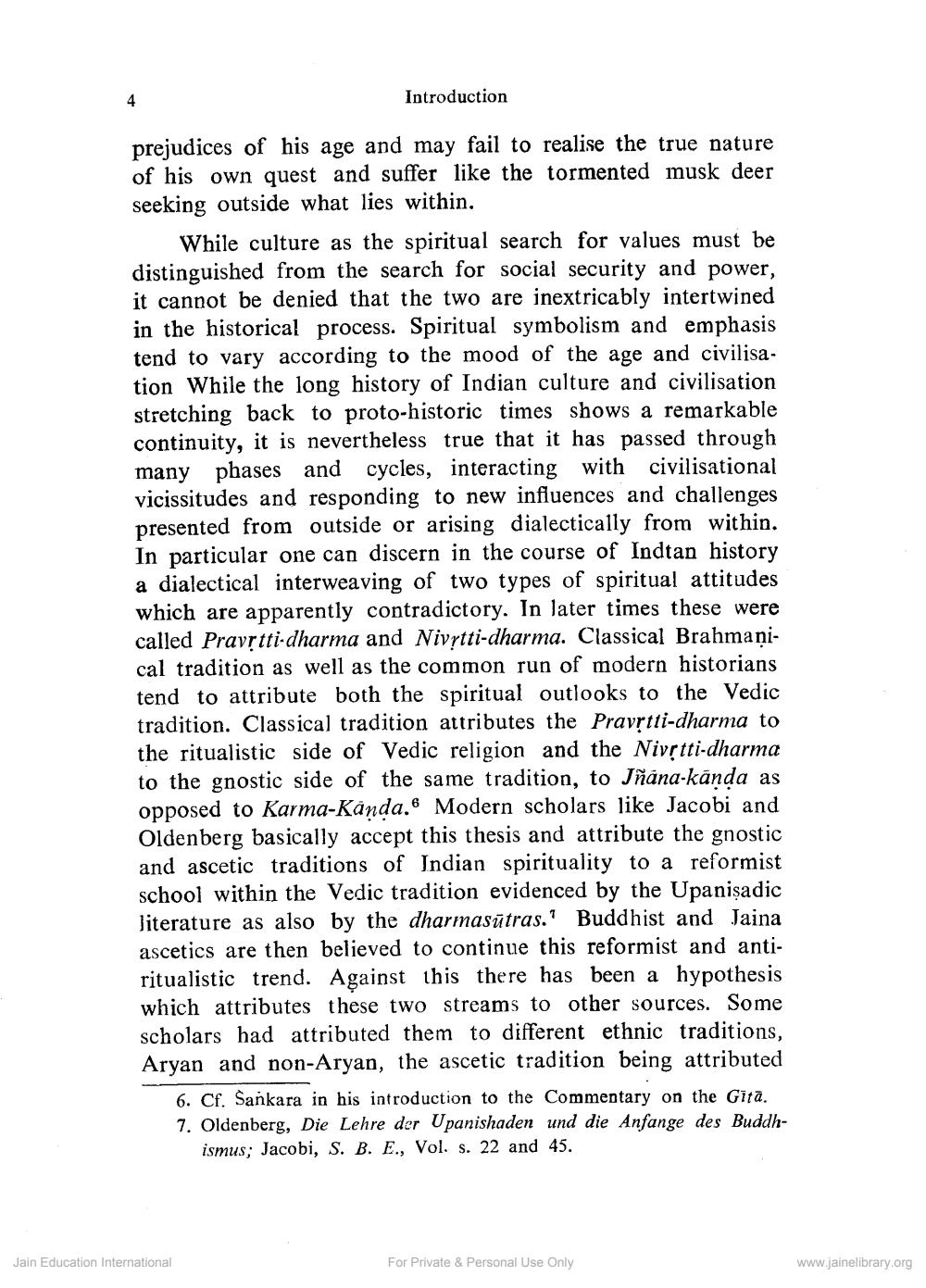________________
Introduction
prejudices of his age and may fail to realise the true nature of his own quest and suffer like the tormented musk deer seeking outside what lies within.
While culture as the spiritual search for values must be distinguished from the search for social security and power, it cannot be denied that the two are inextricably intertwined in the historical process. Spiritual symbolism and emphasis tend to vary according to the mood of the age and civilisation While the long history of Indian culture and civilisation stretching back to proto-historic times shows a remarkable continuity, it is nevertheless true that it has passed through many phases and cycles, interacting with civilisational vicissitudes and responding to new influences and challenges presented from outside or arising dialectically from within. In particular one can discern in the course of Indtan history a dialectical interweaving of two types of spiritual attitudes which are apparently contradictory. In later times these were called Pravrtti-dharma and Nivytti-dharma. Classical Brahmanical tradition as well as the common run of modern historians tend to attribute both the spiritual outlooks to the Vedic tradition. Classical tradition attributes the Pravștti-dharma to the ritualistic side of Vedic religion and the Nivetti-dharma to the gnostic side of the same tradition, to Jñana-kānda as opposed to Karma-Kanda.. Modern scholars like Jacobi and Oldenberg basically accept this thesis and attribute the gnostic and ascetic traditions of Indian spirituality to a reformist school within the Vedic tradition evidenced by the Upanisadic literature as also by the dharmasutras.' Buddhist and Jaina ascetics are then believed to continue this reformist and antiritualistic trend. Against this there has been a hypothesis which attributes these two streams to other sources. Some scholars had attributed them to different ethnic traditions, Aryan and non-Aryan, the ascetic tradition being attributed
6. Cf. Sankara in his introduction to the Commentary on the Gita. 7. Oldenberg, Die Lehre der Upanishaden und die Anfange des Buddh
ismus; Jacobi, S. B. E., Vol. s. 22 and 45.
Jain Education International
For Private & Personal Use Only
www.jainelibrary.org




